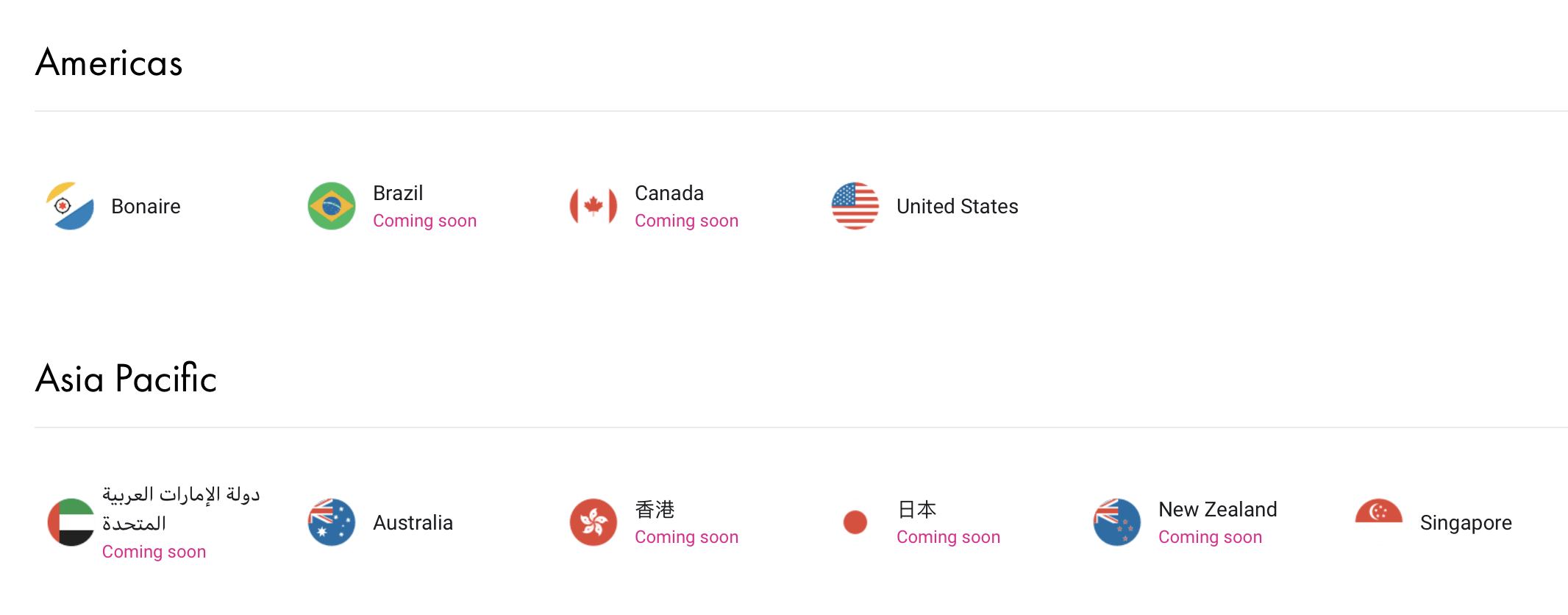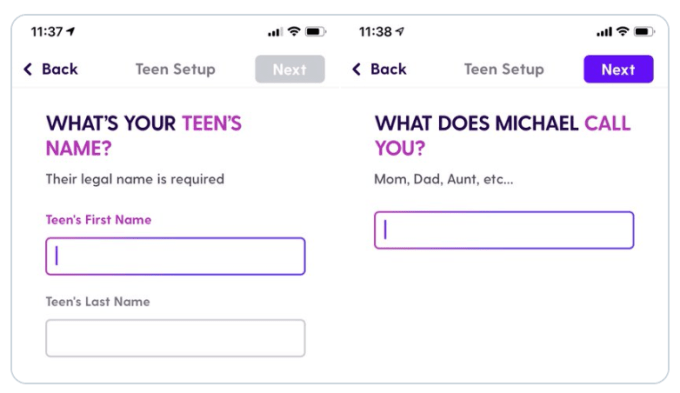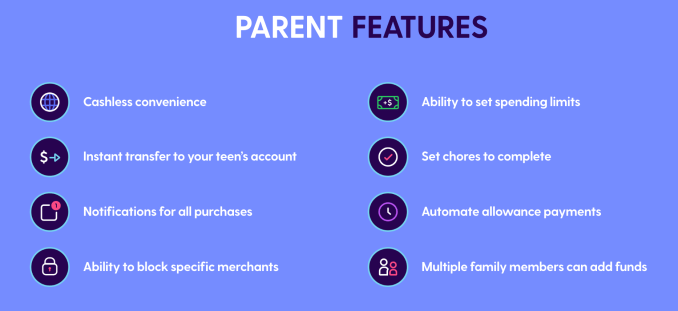HP offers its investors billions in shareholder returns to avoid a Xerox tie-up
To ward off a hostile takeover bid by Xerox, which is a much smaller company, HP (not to be confused with Hewlett Packard Enterprise, a separate public company) is promising its investors billions and billions of dollars.
All investors have to do to get the goods is reject the Xerox deal.
In a letter to investors, HP called Xerox’s offer a “flawed value exchange” that would lead to an “irresponsible capital structure” that was being sold on “overstated synergies.” Here’s what HP is promising its owners if they do allow it to stay independent:
- About $16 billion worth of “capital return” between its fiscal 2020 and fiscal 2022 (HP’s Q1 fiscal 2020 wrapped January 31, 2020, for reference). According to the company, the figure “represents approximately 50% of HP’s current market capitalization.” TechCrunch rates that as true, before the company’s share-price gains posted after this news became known.
- That capital return would be made up of a few things, including boosting the company’s share repurchase program to $15 billion (up from $5 billion, previously). More specifically, HP intends to “repurchase of at least $8 billion of HP shares over 12 months” after its fiscal 2020 meeting. The company also intends to raise its “target long-term return of capital to 100% of free cash flow generation,” allowing for the share purchases and a rising dividend payout (“HP intends to maintain dividend per share growth at least in line with earnings.”)
If all that read like a foreign language, let’s untangle it a bit. What HP is telling investors is that it intends to use all of the cash it generates to reward their ownership of shares in its business. This will come in the form of buybacks (concentrating future earnings on fewer shares, raising the value of held equity) and dividends (rising payouts to owners as HP itself makes more money), powered in part by cost-cutting (boosting cash generation and profitability).
HP is saying, in effect: Please do not sell us to Xerox; if you do not, we will do all that we can to make you money.
Shares of HP are up 6% as of the time of writing, raising the value of HP’s consumer-focused spinout to just under $34 billion. We’ll see what investors choose for the company. But now, how did we get here?
The road to today
You may ask yourself, how did we get here (to paraphrase Talking Heads). It all began last Fall when Xerox made it known that it wanted to merge with HP, offering in the range of $27 billion to buy the much larger company. As we wrote at the time:
What’s odd about this particular deal is that HP is the company with a much larger market cap of $29 billion, while Xerox is just a tad over $8 billion. The canary is eating the cat here.
HP never liked the idea of the hostile takeover attempt and the gloves quickly came off as the two companies wrangled publicly with one another, culminating with HP’s board unanimously rejecting Xerox’s offer. It called the financial underpinnings of the deal “highly conditional and uncertain.” HP also was unhappy with the aggressive nature of the offer, writing that Xerox was, “intent on forcing a potential combination on opportunistic terms and without providing adequate information.”
Just one day later, Xerox responded, saying it would take the bid directly to HP shareholders in an attempt to by-pass the board of directors, writing in yet another public letter, “We plan to engage directly with HP shareholders to solicit their support in urging the HP Board to do the right thing and pursue this compelling opportunity.”
In January, the shenanigans continued when Xerox announced it was putting forth a friendly slate of candidates for the HP board to replace the ones that had rejected the earlier Xerox offer. And more recently, in an attempt to convince shareholders to vote in favor of the deal, Xerox sweetened the deal to $34 billion or $24 a share.
Xerox wrote that it had on-going conversations with large HP shareholders, and this might have gotten HP’s attention— hence the most recent offer on its part to make an offer to shareholders that would be hard to refuse. The company’s next shareholder meeting is taking place in April when we will finally find out the final reckoning.
Powered by WPeMatico
Games already are social networks
Video games are only getting more popular.
Roughly 2.5 billion people around the world played games last year, double the number of players in 2013. Gaming is a $149 billion industry, growing 7% year over year, with the U.S. as its largest market. In America, the average gamer is 33 years old and 46% of gamers are female, according to the Entertainment Software Association.
(This is part one of a seven-part series about virtual worlds.)
Per Quartz reporter Dan Kopf’s summary of U.S. Department of Labor data:
More people now report playing games on a typical day — 11.4% in 2017 compared to 7.8% in 2003 — and, on days they do play games, they spend more time doing so — about 145 minutes in 2017, compared to 125 in 2003.
Young people are the biggest driver of the trend. From 2003 to 2015, 15-24 year olds spent less than 25 minutes playing games on the average day. From 2015 to 2017, those in that age group dedicated almost 40 minutes a day to games.
Mobile games account for a large part of this dramatic growth, but all major game categories are growing. The console gaming market — the oldest segment and most expensive due to hardware cost — expanded more than 7% last year alone.
Powered by WPeMatico
A multiverse, not the metaverse
Following web forums, web platforms and mobile apps, we are entering a new stage of social media — the multiverse era — where the virtual worlds of games expand to become mainstream hubs for social interaction and entertainment. In a seven-part Extra Crunch series, we will explore why that is the case and which challenges and opportunities are making it happen.
In 10 years, we will have undergone a paradigm shift in social media and human-computer interaction, moving away from 2D apps centered on posting content toward shared feeds and an era where mixed reality (viewed with lightweight headsets) mixes virtual and physical worlds. But we’re not technologically or culturally ready for that future yet. The “metaverse” of science fiction is not arriving imminently.
Instead, the virtual worlds of multiplayer games — still accessed from phones, tablets, PCs and consoles — are our stepping stones during this next phase.
Understanding this gradual transition helps us reconcile the futuristic visions of many in tech with the reality of how most humans will participate in virtual worlds and how social media impacts society. This transition centers on the merging of gaming and social media and leads to a new model of virtual worlds that are directly connected with our physical world, instead of isolated from it.
Multiverse virtual worlds will come to function almost like new countries in our society, countries that exist in cyberspace rather than physical locations but have complex economic and political systems that interact with the physical world.
Throughout these posts, I make a distinction between the “physical,” “virtual,” and “real” worlds. Our physical world defines tangible existence like in-person interactions and geographic location. The virtual world is that of digital technology and cyberspace: websites, social media, games. The real world is defined by the norms of what we accept as normal and meaningful in society. Laws and finance aren’t physical, but they are universally accepted as concrete aspects of life. I’ll argue here that social media apps are virtual worlds we have accepted as real — unified with normal life rather than separate from it — and that multiverse virtual worlds will make the same crossover.
In fact, because they incentivize small group interactions and accomplishment of collaborative tasks rather than promotion of viral posts, multiverse virtual worlds will bring a healthier era for social media’s societal impact.
The popularity of massive multiplayer online (MMO) gaming is exploding at the same time that the technology to access persistent virtual worlds with high-quality graphics from nearly any device is hitting the market. The rise of Epic Games’ Fortnite since 2017 accelerated interest in MMO games from both consumers who don’t consider themselves gamers and from journalists and investors who hadn’t paid much attention to gaming before.
In the decade ahead, people will come to socialize as much in virtual worlds that evolved from games as they will on platforms like Instagram, Twitter and TikTok. Building things with friends within virtual worlds will become common, and major events within the most popular virtual worlds will become pop culture news stories.
Right now, three-quarters of U.S.-based Facebook users interact with the site on a daily basis; Instagram (63%), Snapchat (61%), YouTube (51%) and Twitter (41%) have similarly penetrated the daily lives of Americans. By comparison, the percentage of people who play a game on any given day increased from just 8% in 2003 to 11% in 2016. Within the next few years, that number will multiply as the virtual worlds within games become more fulfilling social, entertainment and commercial platforms.
As I mentioned in my 2020 media predictions article, Facebook is readying itself for this future and VCs are funding numerous startups that are building toward it, like Klang Games, Darewise Entertainment and Singularity 6. Epic Games joins Roblox and Mojang (the company behind Minecraft) as among the best-positioned large gaming companies to seize this opportunity. Startups are already popping up to provide the middleware for virtual economies as they become larger and more complex, and a more intense wave of such startups will arrive over the next few years to provide that infrastructure as a service.
Over the next few years, there will be a trend: new open-world MMO games that emphasize social functionality that engages users, even if they don’t care much about the mission of the game itself. These new products will target casual gamers wanting to enter the world for merely a few minutes at a time since hardcore gamers are already well-served by game publishers.
Some of these more casual, socializing-oriented MMOs will gain widespread popularity, the economy within and around them will soar and the original gaming scenario that provided a focus on what to do will diminish as content created by users becomes the main attraction.
Let’s explore the forces that underpin this transition. Continue reading through the seven articles in this series (which will be linked below as they are published daily over the next six days):
- Games already are social networks
- Social apps already are lightweight virtual worlds
- What virtual worlds in this transition era look like
- Why didn’t this already happen?
- How virtual worlds could save society
- The rise of virtual economies and their merging with our “real” economy
- Competitive landscape of the multiverse
Powered by WPeMatico
CircleCI-AWS GovCloud partnership aims to bring modern development to US government
Much like private businesses, the United States government is in the process of moving workloads to the cloud, and facing a similar set of challenges. Today, CircleCI, the continuous delivery developer service, announced a partnership with AWS GovCloud to help federal government entities using AWS’s government platform to modernize their applications development workflows.
“What this means is that it allows us to run our server offering, which is our on-prem offering, and our government customers can run that on dedicated pure cloud resource [on AWS GovCloud],” CircleCI CEO Jim Rose told TechCrunch.
GovCloud is a dedicated, single tenant cloud platform that lets government entities build FedRAMP-compliant secure cloud solutions (other cloud vendors have similar offerings). FedRAMP is a set of government cloud security standards every cloud vendor has to meet to work with the federal government
CircleCI builds modern continuous delivery/continuous integration (CI/CD) pipelines for development teams pushing changes to the application in a rapid change cycle.
“What GovCloud allows us to do is now provide that same level of security and service for government customers that wanted us to do so in an on prem environment in a dedicated single tenant environment [in the cloud],” Rose explained.
While there are a number of steps involved in building cloud applications, Rose said they are sticking to their core strength around building continuous delivery pipelines. As he says, if you have a legacy mainframe application that changes once every year or two, using CircleCI wouldn’t make sense, but as you begin to modernize, that’s where his company could help.
“[CircleCi comes into play] when you get into more modern cloud applications that are changing in some cases hundreds of times a day, and the sources of change for those applications is getting really diverse and managing that is becoming more complex,” Rose said.
This partnership could involve working directly with an agency, as it has done with the Small Business Administration (SBA), or it might involve a systems integrator, or even AWS, inviting them to be part of a larger RFP.
Rose says he realizes that working with the government can sometimes be controversial. Companies from Chef to Salesforce to Google have run afoul with employees who don’t want to work with certain agencies like DoD or ICE. He says his company has tended to focus on areas where agencies are looking to improve citizen interactions and steered away from other areas.
“From our perspective, given that we’re not super involved in a lot of those areas, but we want to get in front of it, both commercially, as well as on the government side, and determine what falls within the fence line and what’s outside of it,” he said.
Powered by WPeMatico
Revolut raises $500 million at a $5.5 billion valuation
Fintech startup Revolut is raising a large Series D round of funding. TCV is leading the $500 million round, valuing the company at $5.5 billion. Over the past few years, Revolut has raised $836 million in total.
Some existing investors are also participating in today’s funding round, but Revolut isn’t sharing names. Previous investors include DST Global, Index Ventures, Balderton Capital and many others.
If you’re not familiar with Revolut, the company is building a financial service to replace traditional bank accounts. You can open an account from an app in just a few minutes. You can then receive, send and spend money from the app or using a debit card.
On top of that, Revolut has added a ton of features that it has built in-house or through partnerships. You can insure your phone, get a travel medical insurance package, buy cryptocurrencies, buy shares, donate to charities, save money and more.
Revolut currently has more than 10 million customers, mostly in Europe and the U.K. The company doesn’t share specific numbers when it comes to transaction volume and monthly active customers, but here are some percentage-based metrics:
- The total number of users has grown by 169% in 2019.
- Daily active customers grew by 380% in 2019.
- Revenue grew by 354% in 2018 (yes, 2018).
- Revenue from premium subscription plans (Revolut Premium and Revolut Metal) have grown by 154% in 2019.
With the new influx of cash, the company says that it’ll focus on improving its product for existing users as well as revenue. It’s all about making Revolut more useful and stickier going forward.
In particular, you can expect new lending services for both retail customers as well as companies using Revolut for Business. While Revolut provides a ton of services in the U.K., customers in other markets don’t have the same feature set. For instance, Revolut recently launched savings vaults in the U.K. — customers in other markets will be able to open savings sub-accounts in the future, as well.
Other than that, Revolut wants to double down on the core features. The company will improve its two subscription tiers (Premium and Metal) and improve banking operations across Europe — you can expect full bank accounts in Europe in the future.
There are currently 2,000 people working for Revolut. “We’re on a mission to build a global financial platform — a single app where our customers can manage all of their daily finances, and this investment demonstrates investor confidence in our business model. Going forward, our focus is on rolling-out banking operations in Europe, increasing the number of people who use Revolut as their daily account, and striving towards profitability,” Revolut co-founder and CEO Nik Storonsky said in the release.
Revolut is currently live in the U.K., Europe, Singapore and Australia (in beta). While the company has announced plans to expand to a handful of countries, the main focus is on launching in the U.S. and Japan in the coming months.

Powered by WPeMatico
VC firm Oxx says SaaS startups should avoid high-risk growth models
Oxx, a European venture capital firm co-founded by Richard Anton and Mikael Johnsson, this month announced the closing of its debut fund of $133 million to back “Europe’s most promising SaaS companies” at Series A and beyond.
Launched in 2017 and headquartered in London and Stockholm, Oxx pitches itself as one of only a few European funds focused solely on SaaS, and says it will invest broadly across software applications and infrastructure, highlighting five key themes: “data convergence & refinery,” “future of work,” “financial services infrastructure,” “user empowerment” and “sustainable business.”
However, its standout USP is that the firm says it wants to be a more patient form of capital than investors who have a rigid Silicon Valley SaaS mindset, which, it says, often places growth ahead of building long-lasting businesses.
I caught up with Oxx’s co-founders to dig deeper into their thinking, both with regards to the firm’s remit and investment thesis, and to learn more about the pair’s criticism of the prevailing venture capital model they say often pushes SaaS companies to prioritize “grow at all costs.”
TechCrunch: Oxx is described as a B2B software investor investing in SaaS companies across Europe from Series A and beyond. Can you be more specific regarding the size of check you write and the types of companies, geographies, technologies and business models you are focusing on?
Richard Anton: We will lead funding rounds anywhere in the range $5-20 million in SaaS companies. Some themes we’re especially excited about include data convergence and the refining and usage of data (think applications of machine learning, for example), the future of work, financial services infrastructure, end-user empowerment and sustainable business.
Powered by WPeMatico
Mirantis co-founder launches FreedomFi to bring private LTE networks to enterprises
Boris Renski, the co-founder of Mirantis, one of the earliest and best-funded players in the OpenStack space a few years ago (which then mostly pivoted to Kubernetes and DevOps), has left his role as CMO to focus his efforts on a new startup: FreedomFi. The new company brings together open-source hardware and software to give enterprises a new way to leverage the newly opened 3.5 GHz band for private LTE and — later — 5G IoT deployments.
“There is a very broad opportunity for any enterprise building IoT solutions, which completely changes the dynamic of the whole market,” Renski told me when I asked him why he was leaving Mirantis. “This makes the whole space very interesting and fast-evolving. I felt that my background in open source and my existing understanding of the open-source landscape and the LTE space […] is an extremely compelling opportunity to dive into headfirst.”
Renski told me that a lot of the work the company is doing is still in its early stages, but the company recently hit a milestone when it used its prototype stack to send messages across its private network over a distance of around 2.7 miles.
Mirantis itself worked on bringing Magma, a Facebook-developed open-source tool for powering some of the features needed for building access networks, into production. FreedomFi is also working with the OpenAirInterface consortium, which aims to create an ecosystem for open-source software and hardware development around wireless innovation. Most, if not all, of the technology the company will develop over time will also be open source, as well.
Renski, of course, gets to leverage his existing connections in the enterprise and telco industry with this new venture, but he also told me that he plans to leverage the Mirantis playbook as he builds out the company.
“At Mirantis, our journey was that we started with basically offering end-to-end open-source cloud buildouts to a variety of enterprises back when OpenStack was essentially the only open-source cloud project out there,” he explained. “And we spent a whole bunch of time doing that, engaging with customers, getting customer revenue, learning where the bottlenecks are — and then kind of gradually evolving into more of a leveraged business model with a subscription offering around OpenStack and then MCP and now Kubernetes, Docker, etc. But the key was to be very kind of customer-centric, go get some customer wins first, give customers a services-centric offering that gets them to the result, and then figure out where the leveraged business model opportunities are.”
Currently, enterprises that want to attempt to build their own private LTE networks — and are willing to spend millions on it — have to go to the large telecom providers. Those companies, though, aren’t necessarily interested in working on these relatively small deployments (or at least “small” by the standards of a telco).
Renski and his team started the project about two months ago and for now, it remains self-funded. But the company already has five pilots lined up, including one with a company that produces large-scale events and another with a large real estate owner, and with some of the tech falling in place, Renski seems optimistic that this is a project worth focusing on. There are still some hurdles to overcome and Renski tells me the team is learning new things every day. The hardware, for example, remains hard to source and the software stack remains in flux. “We’re probably at least six months away from having solved all of the technology and business-related problems pertaining to delivering this kind of end-to-end private LTE network,” he said.
Powered by WPeMatico
Venmo prototypes a debit card for teenagers
Allowance is going digital. Venmo has been spotted prototyping a new feature that would allow adult users to create for their teenage children a debit card connected to their account. That could potentially let parents set spending notifications and limits while giving kids more flexibility in urgent situations than a few dollars stuffed in a pocket.
Delving into children’s banking could establish a new reason for adults to sign up for Venmo, get them saving more in Venmo debit accounts where the company can earn interest on the cash and drive purchase frequency that racks up interchange fees for Venmo’s owner PayPal .

But Venmo is arriving late to the teen debit card market. Startups like Greenlight and Step let parents manage teen spending on dedicated debit cards. More companies like Kard and neo banking giant Revolut have announced plans to launch their own versions. And Venmo’s prototype uses very similar terminology to that of Current, a frontrunner in the children’s banking space with over 500,000 accounts that raised a $20 million Series B late last year.
The first signs of Venmo’s debit card were spotted by reverse engineering specialist Jane Manchun Wong, who has provided slews of accurate tips to TechCrunch in the past. Hidden in Venmo’s Android app is code revealing a “delegate card” feature, designed to let users create a debit card that’s connected to their account but has limited privileges.

A screenshot generated from hidden code in Venmo’s app, via Jane Manchun Wong
A set-up screen Wong was able to generate from the code shows the option to “Enter your teen’s info,” because “We’ll use this to set up the debit card.” It asks parents to enter their child’s name, birth date and “What does your teen call you?” That’s almost identical to the “What does [your child’s name] call you?” set-up screen for Current’s teen debit card.

When TechCrunch asked about the teen debit feature and when it might launch, a Venmo spokesperson gave a cagey response that implies it’s indeed internally testing the option, writing “Venmo is constantly working to identify ways to refine and enhance the user experience. We frequently test product offerings to understand the value it could have for our users, and I don’t have anything further to share right now.”
Typically, the tech company product development flow sees them come up with ideas, mock them up, prototype them in their real apps as internal-only features, test them externally with small percentages of real users, then launch them officially if feedback and data is positive throughout. It’s unclear when Venmo might launch teen debit cards, though the product could always be scrapped. It’d need to move fast to beat Revolut and Kard to market.

Current’s teen debit card
The launch would build upon the June 2018 launch of Venmo’s branded Mastercard debit card that’s monetized through interchange fees and interest on savings. It offers payment receipts with options to split charges with friends within Venmo, free withdrawls at MoneyPass ATMs, rewards and in-app features for reseting your PIN or disabling a stolen card. Venmo also plans to launch a credit card issued by Synchrony this year.
Venmo might look to equip its teen debit card with popular features from competitors, like automatic weekly allowance deposits, notifications of all purchases or the ability to block spending at certain merchants. It’s unclear if it will charge a fee like the $36 per year subscription for Current.

Current offers these features for parents who set up a teen debit card
Tech startups are increasingly pushing to offer a broad range of financial services where margins are high. It’s an easy way to earn cheap money at a time when unit economics are coming under scrutiny in the wake of the WeWork implosion. Investors are pinning their hopes on efficient financial services too, pouring $34 billion into fintech startups during 2019.
Venmo’s already become a popular way for younger people to split the bill for Uber rides or dinner. Bringing social banking to a teen demographic probably should have been its plan all along.
Powered by WPeMatico
Huawei’s ill-fated foldable returns with a more robust upgrade
MWC may have been canceled on account of rising coronavirus concerns, but the party still went on for Huawei (albeit to what appears to have been a mostly empty room). A year after wowing crowds with the Mate X, the company is introducing the Mate Xs.
Rather than a proper successor, the device appears to be the result of Huawei’s decision to go back to the drawing board, following Samsung’s very public problems with its own original foldable.

The design looks nearly identical to the original version of the phone — which is a pro. Honestly, the one major downside of the device (aside from a lofty price tag) is the fact that it never fully arrived, outside of what appears to be a relatively small batch offering in China.
Like Samsung, Huawei’s update focused a lot on the hinge; with increased mechanical components, the product should be more rugged than the original. Keep in mind that, while we were able to play around with the original Mate X, that was about it. Personally, I saw one at MWC and had an opportunity to try one for a few minutes during lunch, between meetings at Huawei HQ in Shenzhen.

Now that foldables have arrived, it seems Huawei is finally ready to take the leap. Of course, one ought not forget the company’s ongoing issues here in the States that will not only make it more difficult to procure here, but also blocks access to Android apps and services. That will continue to be a major issue for the company’s products, going forward.
Price, too, will continue to be an issue, at around $2,700 when it goes up for sale in certain markets next month. That extremely inflated price gets you a 6.6-inch display, 5G, a beefy 4,500 mAh battery, the latest Kirin 990 chip, 8GB of RAM and 512GB of storage. Go big and/or go home, right?
Powered by WPeMatico
In Fortnite’s new spy-themed season, more is more
The new season of Fortnite’s second chapter finally landed last week, shaking up a reimagined map that burst dramatically out of a black hole in the game last year. Over the weekend, we scoped out what’s changed in a game now sprinkled with secret agents, laser beams and all manner of things dipped in gold. Happily, we can report that Epic returns the game to its true colors in season 2, with some innovative ideas that deepen the game for casual players.
The black hole event and subsequent total map makeover were exciting at the time, but as the months ticked by, Epic’s decision to pare down the game’s excesses left the game feeling bare. In season 2, Epic piles a lot of new ideas onto the game’s foundation, and the game feels weirder and more chaotic with a map that’s much more alive as a result. And bananas in suits. Did we mention bananas in suits?
The Island has been taken over by covert operatives – members of Ghost and Shadow. Will you join the fight? pic.twitter.com/dmUiUyxWM2
— Fortnite (@FortniteGame) February 20, 2020
In season 2, Fortnite takes its most committed stab yet at a coherent theme, with spies, secret societies, dapper bananas, bulky henchmen and… a really swole cat for some reason. It’s a fun vibe and well-executed so far. That theme plays out everywhere, from a revamped battle pass menu designed as a spy headquarters to some very dynamic new high-risk/high-reward map hotspots chock full of special new weapons, locked vaults and laser beams.
Even better, the new locations are stocked with NPC versions of the boss-like characters the season introduces us to right off the bat, making for a fun and reasonably challenging way to mix up gameplay when you need a break from the sometimes lonely intensity of battle royale play.
Suit up, it’s time to drop in, secure intel and take back the Island. The Agency is calling, whose side are you on? pic.twitter.com/kHw6LcDSnT
— Fortnite (@FortniteGame) February 20, 2020
The new season keeps the old map mostly intact while adding five main new locations, all heavily guarded, loot-rich fortresses. That means a new point of interest near each corner of the map, and one right on the central island (a spot inevitably destined for something more interesting than a suburban home). The rest of the map doesn’t have many visual changes, but a handful of smaller, old locations scattered around the map have been co-opted by spy organizations and staffed with henchmen, which makes for a chaotic surprise when you come across them in the heat of gameplay. Even Pleasant Park has its own underground spy hub now.
Down the line, the new season will also introduce two competing factions for players to join, Ghost and Shadow. Depending on which faction you choose, players can unlock some pretty cool variants on battle pass skins, including Meowscles, a shirtless, muscle-bound catman with a pec-flexing animation that might be the best thing to ever happen to Fortnite. Well, except for the new teleporting port-a-potties. You’ll find those soon enough.
Attention Operatives: Your choices will impact each Chapter 2 – Season 2 Battle Pass Agent’s future… permanently.
No matter what side you turn them to – GHOST or SHADOW, their allegiance cannot be reversed. Choose wisely! pic.twitter.com/k88IXZAEjl
— Fortnite (@FortniteGame) February 20, 2020
As far as changes that will affect gameplay, there are many, many unvaulted weapons mixing things up relative to last season’s stripped-down arsenal. Traps are gone, chests no longer shower you with fishing rods (thankfully) and heavy assault rifles and all manner of silenced guns have made a comeback. And if you really want to be treated to the best weapons in the game, you can raid one of the five new spy headquarters to take down bosses, including an explosive-happy rocker named TNTina, a sharply dressed guy calling himself Midas and Meowscles (oh Meowscles!), who hangs out on his own gigantic, laser-guarded yacht.
As you work through the battle pass, you’ll also unlock these boss characters as skins. It’s a fun way to drape some light narrative over a game loved mostly for its incoherent total cartoon chaos rather than a character-centric light and fluffy multiplayer shooter like Overwatch. And because Epic is tasked with the impossible — maintaining momentum on a game with such historic success it basically became a mainstream social network at its peak — carving out a deeper game under Fortnite’s candy-colored shell can’t hurt.
Powered by WPeMatico



